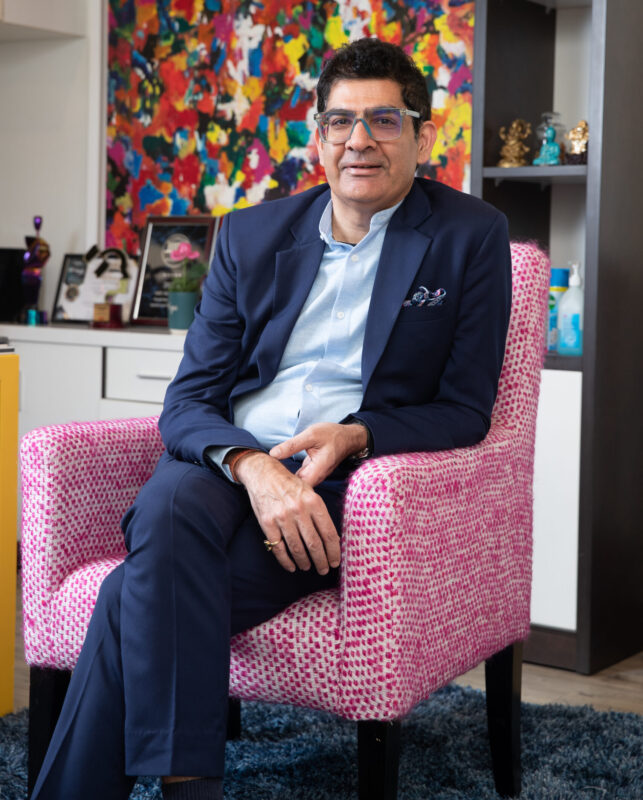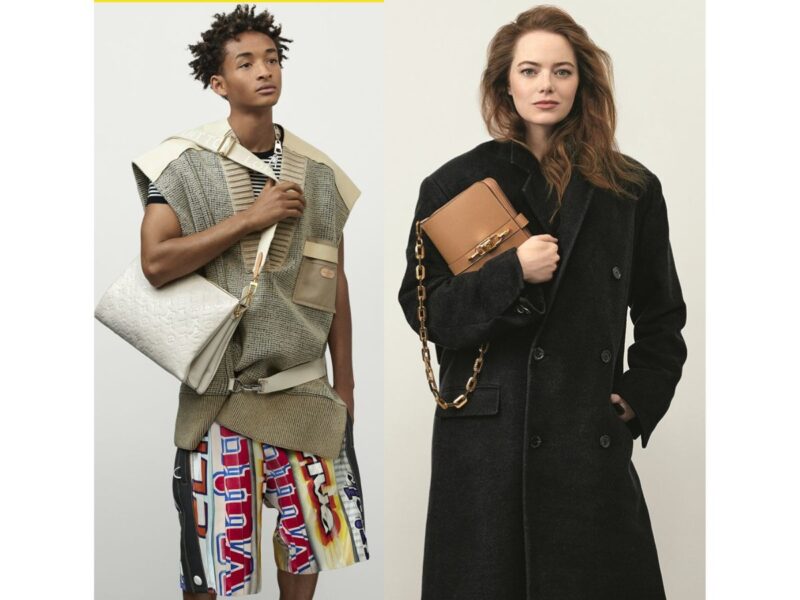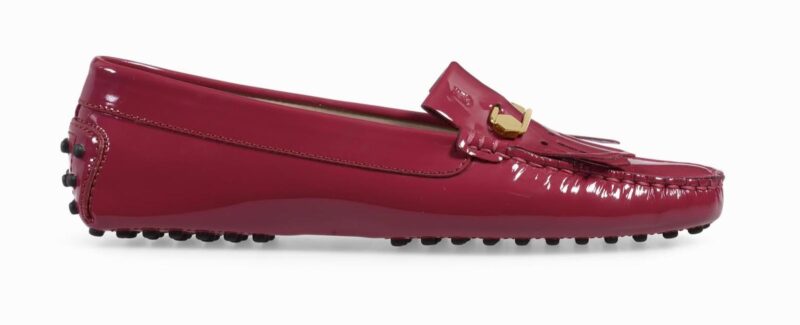When Safir Anand, a senior partner and head of trademarks contractual and commercial IP at Anand and Anand, a 100-year-old law firm in Delhi, began his journey in the design world, he knew it would be an uphill task.
He had mostly dealt with corporates and was familiar only with the board room culture. His book Chrysalis, a first-of-its-kind released at Jaipur Literature Festival, was an ode to some of the biggest brand names in the country which have registered Intellectual Properties.
Mostly unorganised, he started seven years ago with a four-pronged strategy — awareness, enforcement, claiming damages, value in deals and building brand equity, hoping to help the inhabitants of the style hemisphere. This did bear fruit as the veteran designer Anita Dongre, only last week was awarded damages from the court for a company that was selling her brand’s counterfeits. This is after big names like Ritu Kumar, Manish Malhotra and Sabyasachi Mukherjee also took copy masters to court!
These victories have boosted the confidence of the rest of the fashion pack. Earlier, they were hesitant to go to court if someone was replicating their outfits, as they knew it was an exhaustive procedure. Safir and his firm have managed to narrow that time-frame in court. Most recently they have added social media in their ambit of liability.

“Anju Modi watermarks all her pics on social media, so publications can’t pick them up. Rohit Bal had a press conference at Bikaner House some time back and announced all his designs are IP protected, which will scare a host of copycats,” says Safir, who also won the global award for the best independent practice by the Luxury Law Alliance in UK.
The process begins with teaching designers what is patent, copyright and design protection. They can also now extend this to packaging as well as store design.
“Apple stores designs are IPR protected, just like the Taj Mahal hotel in Mumbai, Tod’s adds dots at the back as a distinguishing mark, Burberry has the checks, and Levi’s has the red tag for buyers to know it is original,” he says.
In Delhi, Rajesh Pratap Singh has the classic selvage at the back of his garments to prove it is his product, and the legal eagle urges style gurus to extend IPR to launch brand extensions — home, accessories to even jewellery.
“Communication is the way to protection. This increases monetary value of the brand. They are able to make lucrative deals with corporates, the idea is to establish a cohesive legal eco-system,” Anand adds.
The Delhi High Court recently restrained two individuals from selling counterfeit Louis Vuitton products. They had to pay damages of Rs 9.59 lakh on April 18, 2023.
The defendants cannot use trademarks ‘Louis Vuitton’, ‘LV’ logo, the Toile monogram pattern, the Damier pattern and the LV flower pattern.

Delhi-based Geisha Designs, Paras Bairoliya and Shalini Jaikaria, were accused of copying designer Vaishali S’s 2017 and the designer wrote on social media, “After several designers softly copied our creations, now it is a bit too much! Geisha Design claims they “created” for Niki Mehra for Cannes! I would rather say it was created by VAISHALI S for 2017 NY Fashion Week … the same!!… and copied in poor quality. Where have creativity and decency gone?”
Vaishali says, “Our mission is to support weavers and the handlooms of India. This is why in a [very] few cases we have been sentimental and reacted to bad ‘inspirations’ from other brands, or made with cheap and not conscious manufacturing. In the end, if people get “inspired”, it means that we are doing something good. There will always be people preferring to buy cheap copies, but there will be people who admire and buy creations that visibly come from a well-defined creative path, and with great workmanship. We are depositing a few designs and as a matter of fact, we have also become much more visible and well known across India and Europe.”
She adds that loyal followers and clients regularly give a heads up on social media when there is a blatant copy of “Vaishali S inspired something”.
Internationally, Hermès won a lawsuit against Mason Rothschild this year for violating a trademark by selling NFT ‘Meta Birkins’. The jury said the digital images are not art. It is the first trial to look at IP infringement by NFTs (non-fungible tokens). Hermès was given $133,000 in damages, $100,000 for IP infringement, and $23,000 for cybersquatting. Hermès Birkin bags were launched in 1984. Rothschild sold MetaBirkin NFTs on his website in 2021, selling 100 NFTs for $450 each, earning $125,000 in total.
Adidas alleged Thom Browne Inc’s four stripes were too similar to its three stripes. Browne argued shoppers were unlikely to confuse the two brands as they had different numbers of stripes. Adidas asked for $7.8m (£6.4m) in damages, but Browne won as stripes are a “common design”.
After understanding how the global and domestic market views IPR, Safir observed that shops in Chandni Chowk would allegedly send Trojan horses to capture new collections. They would allegedly pose as customers, buy a piece, and then replicate it. Later, showrooms armed themselves with cameras to spot these ‘posers’. Customers were urged not to take pictures and recording of fashion shows was deterred. The most recent case Anand and Anand fought was for the Bachchan family to take down videos that claimed Aaradhya Bachchan was “gravely unwell”. That fake news got a lot of traction, as anything controversial will.
The most interesting part of IPR is that even Amazon now will not sell your products unless you have a brand registry, which ensures you are legitimate.
Shapes are the next addition to IPR with the super expensive Birkin bag by Hermes, patented for its form, like the Zippo lighter and the LV Epi pattern (style of pressed leather that offers durability).
“Our next step is to introduce IPR in festivals too — music to art and literature, from signages, logos, sponsors to titles. This holds true for hashtags too — like the Lakme India Fashion week with FDCI hashtags cannot be replicated,” explains Anand.
The law firm is also working with Small and Midsize Enterprises (SMEs) to enable them with a skill set as well as the CII to help the creative economy grow.
Delhi-based designer duo Shantnu and Nikhil added, “We have registered each existing logo of the brand along with logos of the forthcoming brands which you shall see from Maison Shantnu & Nikhil. Apart from the logos, we have registered our signature silhouettes like the classic drape Kurta and the iconic crests that define Shantnu & Nikhil ethos.”
Social media has emerged as an important medium in bringing out the imitators. In the past, Instagram handles like Diet Sabya, have actively helped designers in recognising their plagiarised designs.
“We think it will be unfair to list out the brands and the people involved considering that they are emerging talents as well. Often, such issues get easily sorted when we have an open discussion with the brand and make them realise how it’s an infringement of ethics. Although there have been times when the legalities have been involved,” says Shantnu.

Plagiarism of design is a part and parcel of being a big brand. Internationally Gucci, Dior and even Indian couturiers have been facing this problem for the longest time.
“We can protect key brand elements which each brand must do. Rampant copying is just unstructured and not very well defined in the Indian law ecosystem. Hence, as a brand we feel plagiarism of our designs only increases the aspirational value people have for the brand and we take it all with a pinch of salt,” says Nikhil.
“Apart from seeking legal help, there is very little a brand can do to ensure zero plagiarism of designs. We feel if our designs are getting copied it puts us in a space where we have a strong say whilst pointing it out. Having said that, customers who are buying dupes of our designs are surely not our target audience. At the end of the day every customer wants to own an original couture piece,” observe the duo.





